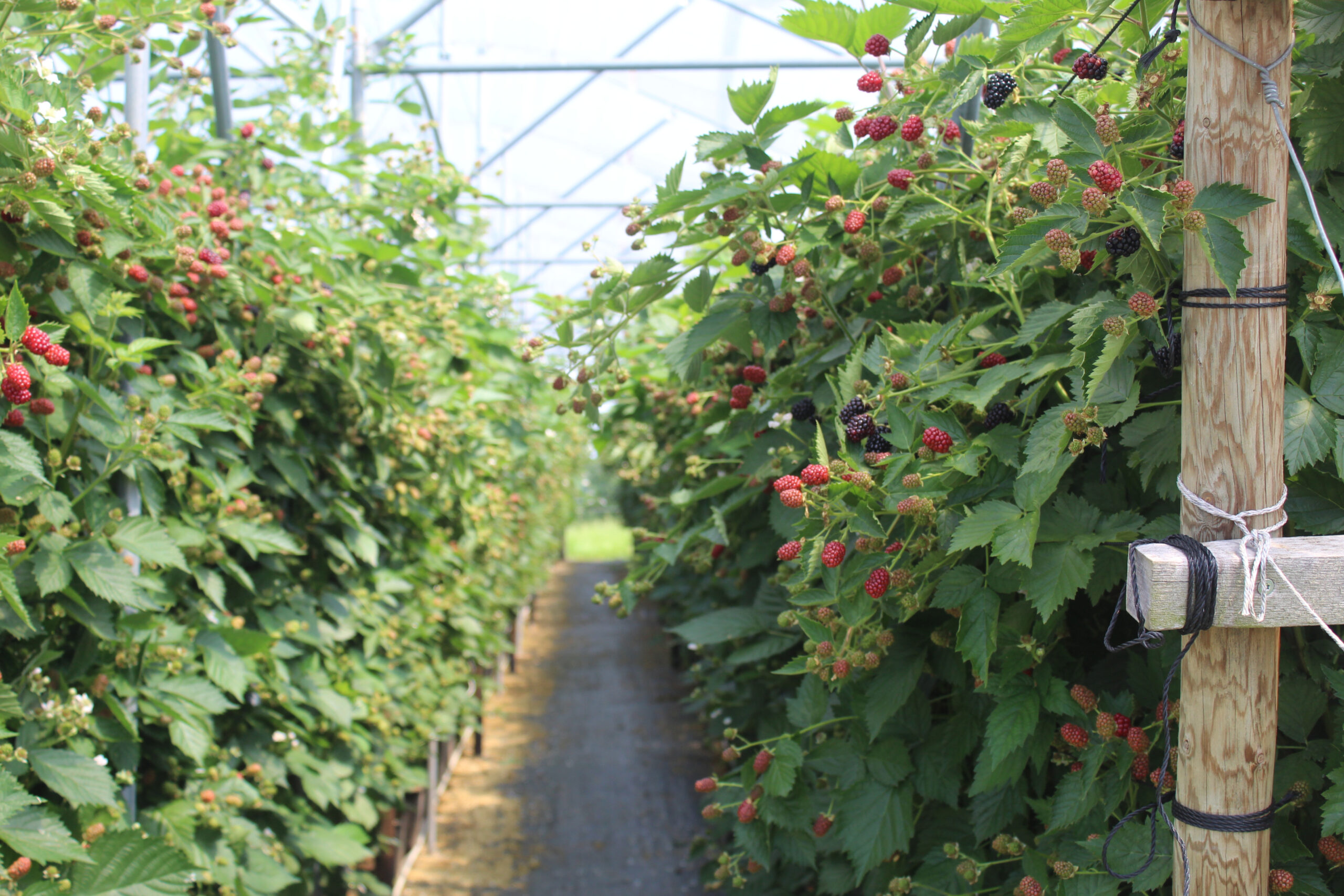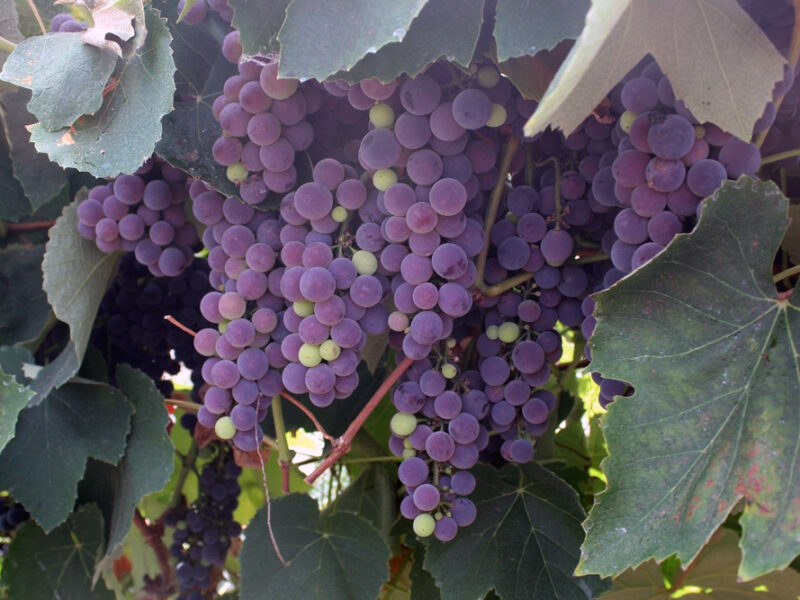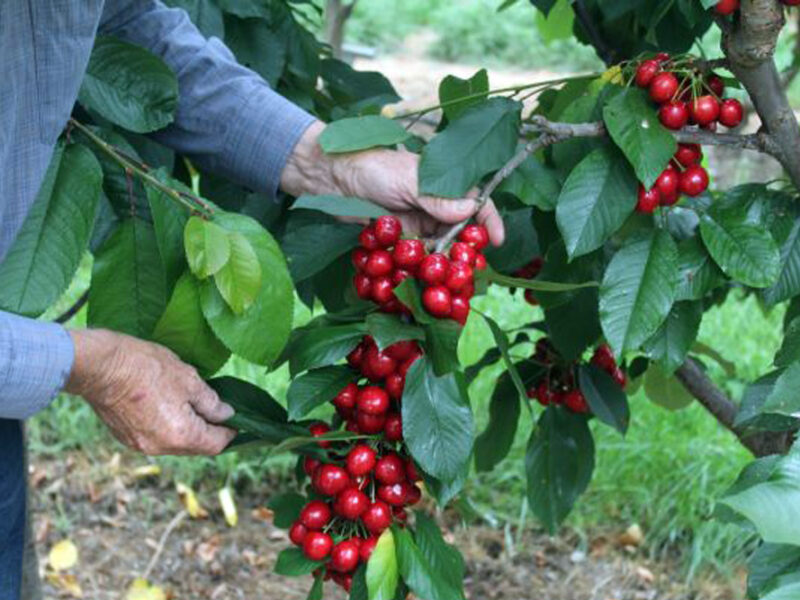Blackberries are a relatively new horticultural crop. As a school boy in the 1940’s in England I can recall picking them from wild clumps of canes in hedgerows and waste land in the autumn for making jam (blackberry and apple). A prickly task as the canes are usually covered in large thorns. When I arrived in New Zealand in 1958 I found that the blackberry was classified as noxious a weed, as it could become an impenetrable jungle in a few years if left alone.
They are similar in cropping behaviour to raspberries, in that the primocanes do not (usually) fruit in the 1st year, and the fruit develops on the laterals which grow in the second year. Propagation is, however, more straightforward in that the tips of the young shoots will root easily into the ground or in quantity a 3 leaf cutting will develop roots after about 3 weeks of mist propagation.
My first experience of growing them commercially was in England in 1953, when I worked on a mixed farm, prior to attending University. The owner had over the years selected large fruited blackberry plants growing wild, and planted them in rows supported by wires and posts.
Blackberries are regarded as a high health product, because of the anthocyanins the fruit contains, and are now grown world-wide, except for the humid tropics.
There main problem is the very vicious thorns that some of the varieties produce. Although some thornless varieties have been developed these tend to be less productive.
The major recent development of blackberries has come from the University of Arkansas (USA) which has bred some varieties which crop on the primocanes.
Brambles
In the 1880’s a certain Judge Logan (in California) successfully crossed a raspberry with a blackberry, and produced a hybrid called the loganberry. This produces purple fruit, very suitable for jam, but a little acid for dessert fruit. Of more modern origin (but of uncertain parentage) is the Boysenberry, believe to have been developed in California early in the 20th Century, as a cross between the raspberry, blackberry, dewberry and loganberry. It is a large fruited (up to 8 g) maroon coloured berry with a very attractive flavour. Unfortunately it is soft and does not travel well. Knotts Berry Farm in California were an important source of the fruit, but New Zealand is currently the world’s major producer, and then only for processing into jam or for freezing. Because of this use it can be mechanically harvested. Recently it has been grown in a high plastic tunnel greenhouses in New Zealand, and appears to have developed a new following as a dessert fruit.
Blackberries and brambles are essentially grown in the same manner. The fruiting canes are trained along wires stretched between strong posts. Once the crop has been harvested the fruiting canes ae cut back to ground level, and replaced by the young primocanes, which are normally left at ground level until then.
Mike Nichols



